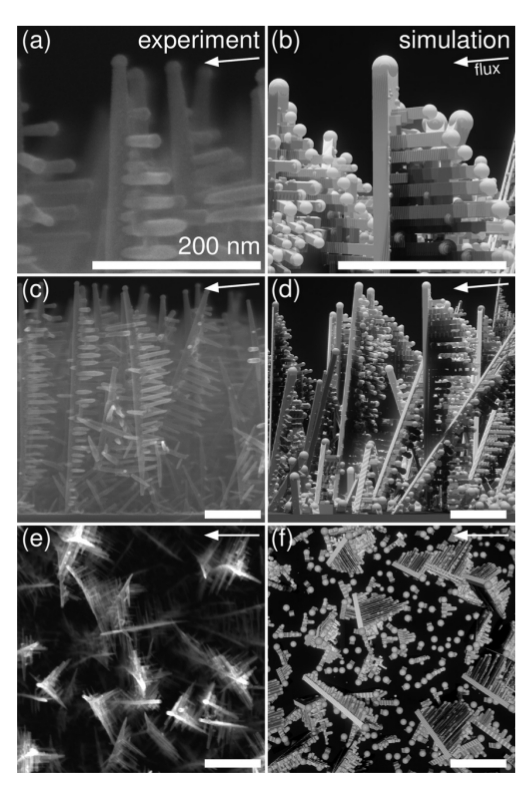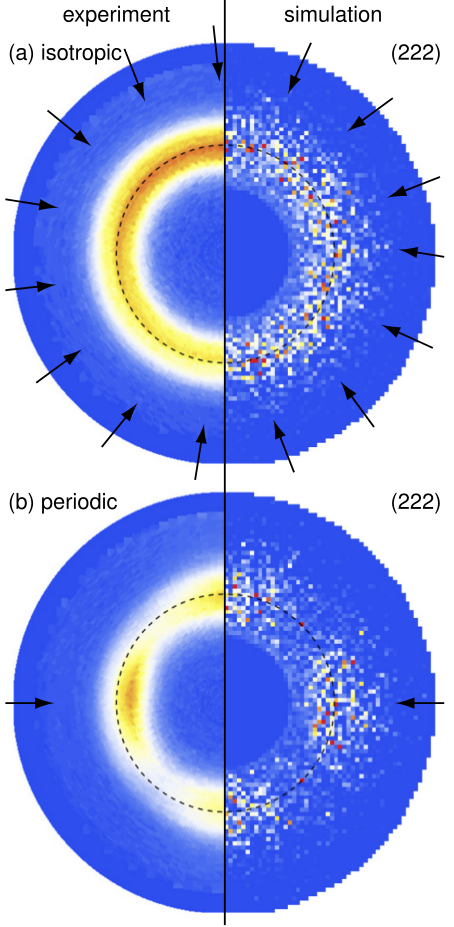Unreal Engine used to simulate the growth of nanoles
A group of scientists from Canada conducted a simulation of the growth of branched nanowires (nano-trees) in a very original way - instead of specialized scientific codes, they took a commercial game engine.
Nanowires are crystalline structures with a diameter on the order of nanometers and a very large (unlimited) length. To describe the flow of current through such wires, quantum effects must be taken into account; therefore, they are also called “quantum wires”.
Practical interest in them is due to the fact that they can be made from semiconductors, which means that pn junctions, transistors and microcircuits can be organized on the basis of such nanowires. Quantum properties also allow their use in photovoltaic cells. Even greater hopes are placed on branched nanowires, or the so-called “nanowires” - potentially you can grow “nanoles”, the branches of which “trees” will intertwine in a special way, forming a three-dimensional structure of the nanochip.
One method of growing nano-trees is “gliding” deposition ( GLAD ). In this method, nanowires crystallize on the substrate, which is blown by an oblique jet of vapor of the deposited substance. With GLAD, you can grow straight, spiral, and branched nanowires on a substrate. To obtain complex three-dimensional structures, it is necessary to control the kinetics of growth of nanodreeves, and at the moment it is much easier to do this using computer simulation than experimentally.
')
A group of scientists from Canada published an article describing the results of such calculations. As a program for calculations, they took the Unreal Development Kit, which gave them “out of the box” a ready-made Newtonian physics and visualization tool. The researchers need only specify the rules by which nuclei form on the substrate, rules for the growth of wires, and the rules for which the wire already grown blocks the flow of steam, thus preventing the nucleation and growth of the crystal in some area of space.
The results show a striking fit to experiments conducted under similar conditions.

Fig. 1. Comparison of calculated and experimentally obtained nanostructures (illustration from the original work).

Fig. 2. Comparison of calculated and experimental pictures of x-ray diffraction on nanostructures (illustration from the original work).
The entire calculation with a volume of 1x1x2 μm 3 had a length of 200 thousand frames with an average calculation speed of about 100 fps on the Core i7-3930.
Nanowires are crystalline structures with a diameter on the order of nanometers and a very large (unlimited) length. To describe the flow of current through such wires, quantum effects must be taken into account; therefore, they are also called “quantum wires”.
Practical interest in them is due to the fact that they can be made from semiconductors, which means that pn junctions, transistors and microcircuits can be organized on the basis of such nanowires. Quantum properties also allow their use in photovoltaic cells. Even greater hopes are placed on branched nanowires, or the so-called “nanowires” - potentially you can grow “nanoles”, the branches of which “trees” will intertwine in a special way, forming a three-dimensional structure of the nanochip.
One method of growing nano-trees is “gliding” deposition ( GLAD ). In this method, nanowires crystallize on the substrate, which is blown by an oblique jet of vapor of the deposited substance. With GLAD, you can grow straight, spiral, and branched nanowires on a substrate. To obtain complex three-dimensional structures, it is necessary to control the kinetics of growth of nanodreeves, and at the moment it is much easier to do this using computer simulation than experimentally.
')
A group of scientists from Canada published an article describing the results of such calculations. As a program for calculations, they took the Unreal Development Kit, which gave them “out of the box” a ready-made Newtonian physics and visualization tool. The researchers need only specify the rules by which nuclei form on the substrate, rules for the growth of wires, and the rules for which the wire already grown blocks the flow of steam, thus preventing the nucleation and growth of the crystal in some area of space.
The results show a striking fit to experiments conducted under similar conditions.

Fig. 1. Comparison of calculated and experimentally obtained nanostructures (illustration from the original work).

Fig. 2. Comparison of calculated and experimental pictures of x-ray diffraction on nanostructures (illustration from the original work).
The entire calculation with a volume of 1x1x2 μm 3 had a length of 200 thousand frames with an average calculation speed of about 100 fps on the Core i7-3930.
Source: https://habr.com/ru/post/207272/
All Articles